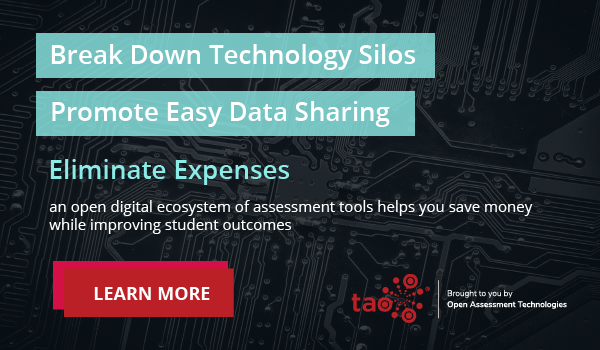EdTech has had a phenomenal impact on modern education. As more systems and applications continue to enter the space, ensuring interoperability of these technologies has become a vital aspect of operations. Interoperability enables institutions to invest in scalable tech that improves educational participation and boosts learning outcomes at a low cost.
To learn more about interoperability and its benefits in learning outcomes, read our latest blog post.
Interoperability occurs when a technology network is built around well established and adopted standards. The systems and applications within your ecosystem must follow the same framework, or speak the same language, which enables the technologies within to easily communicate data. One of these frameworks — the world renowned IMS Interoperability Standards — is what we’ll to discuss today.
What are IMS Global Standards?
IMS Global Standards are part of the IMS Global Learning Consortium network, a non-profit organization that “enables a plug-and play architecture and ecosystem that provides a foundation on which innovative products can be rapidly deployed and work together seamlessly.”
With the pillars of seamless integration and an agile open architecture, the IMS Standards create a benchmark for a better user experience, deeper insight, optimal flexibility, and choice within digital learning and assessment tools. Modern institutions all over the world utilize standards set by IMS to boost educational outcomes.
Below are the key IMS global standards for connecting assessments to learning.
Learning Tool Interoperability (LTI®)
“The principal concept of LTI® is to establish a standard way of integrating rich learning applications (often remotely hosted and provided through third-party services) with platforms like learning management systems, portals, learning object repositories, or other educational environments.” — IMS Global Learning Consortium
The LTI® standard offers the industry standard for smooth integration between learning tools and software. In particular, the standard aims to connect any Learning Management System (LMS) to any educational tool or application, like virtual classrooms or domain-specific learning engines. Unlike some proprietary extension frameworks, an LTI® -enabled framework acts as a single point of integration for all applications within a system.
In a way, the LTI® standard acts as the gateway into an interoperable ecosystem. Within this framework, end users have an array of options of web-based applications that advance instruction capabilities and learning. These centralized applications also offer a superior user experience at a lower total-cost-of-ownership than their siloed counterparts.
Question & Test Interoperability (QTI®)
“The IMS Question & Test Interoperability (QTI®) specification enables the exchange of item and test content and results data between authoring tools, item banks, test construction tools, learning platforms, assessment delivery systems, and scoring/analytics engines.” — IMS Global Learning Consortium
Assessment creation, delivery, and results are at the forefront of the QTI® standard. The standard supports an assessment ecosystem where item type and test result data informs item banks, content authoring tools, LMSs, and test delivery platforms. This enables assessments that not only better reflect daily instruction or individual subject mastery, but support students that require accessibility accommodations.
Dynamic tools within an a QTI®-supported EdTech stack also play an integral role in connecting assessment to learning. For example, certain interoperable technology can deliver test items with advanced features like mathematical symbols, graphing capabilities, and tools like calculators and protractors. Interactive and technology-enhanced tools provide a more interactive and engaging educational experience.
The Competencies and Academic Standards Exchange (CASE®)
“The Competencies and Academic Standards Exchange (CASE®) specification defines how systems exchange and manage information about learning standards and/or competencies in a consistent and digitally-referenceable way.” — IMS Global Learning Consortium
IMS CASE® aims to extract, optimize and securely exchange data about education competencies or academic standards. Generally, much of this documentation is in an inaccessible HTML, PDF or spreadsheet format. Within a CASE® framework, the data transforms into a machine-readable format, where it can be seamlessly exchanged between tools and applications within the system.
For example, the CASE® standard is useful for aligning test results across multiple platforms to set learning standards. This allows educators to better understand student learning outcomes and compare them to benchmarks, while delivering assessments that better respond to students’ needs.
Connecting Assessment to Learning
Interoperability, and the IMS global standards that support an open architecture, can align testing methods, results, and instruction. While LTI®, QTI®, and CASE® only scratch the surface of IMS standards, these frameworks will support your institution’s digital transformation journey of connecting assessment to learning.
However, keep in mind that using IMS standards doesn’t always mean interoperability (or even an IMS-certified status). To learn more, read our post on The Importance of IMS Certification and QTI Compliance.


